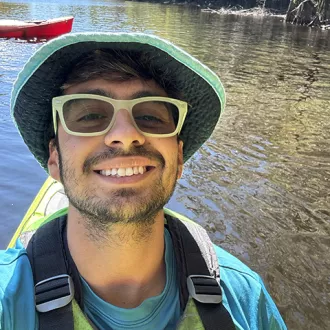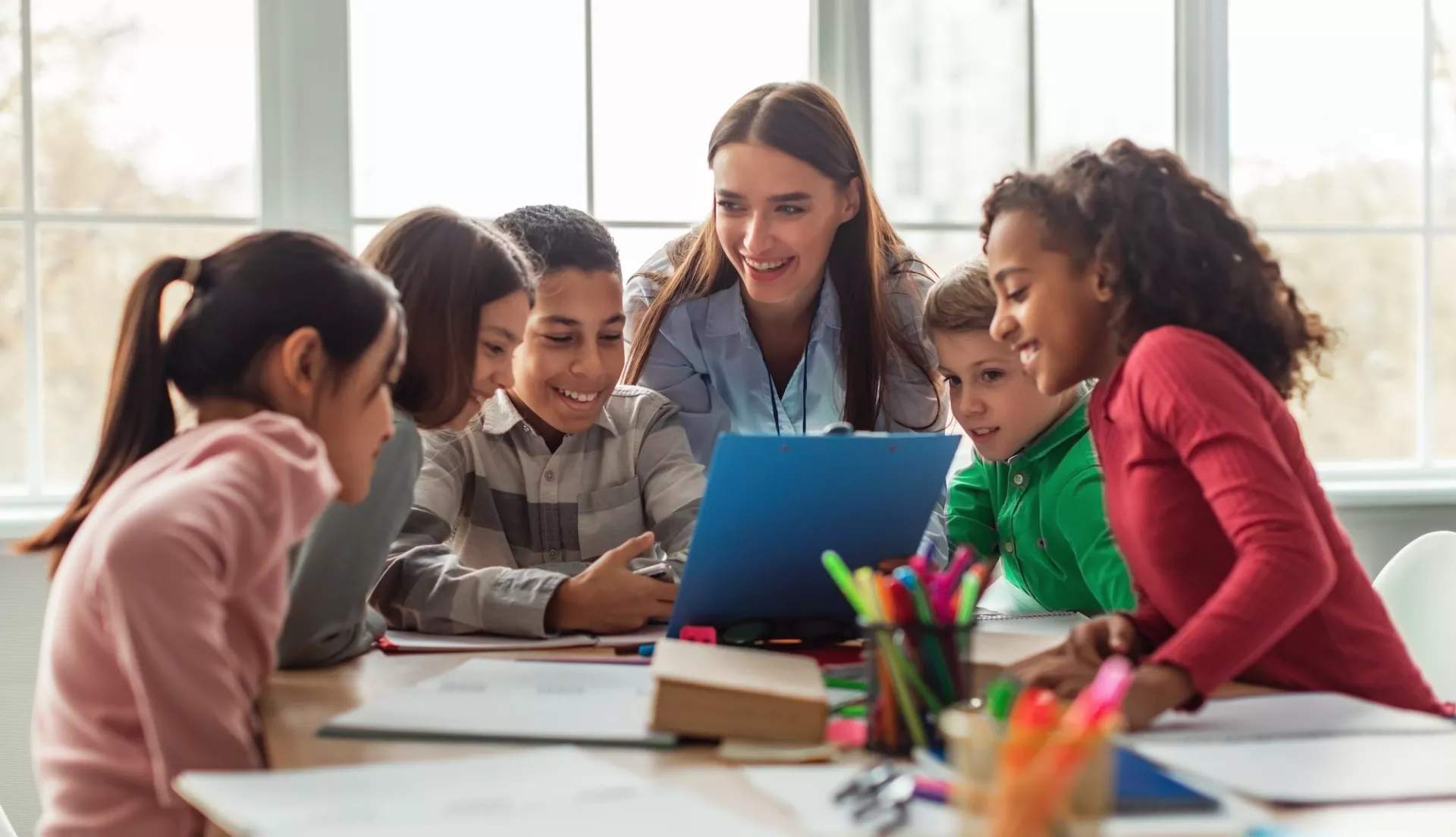Key Takeaways
- Educators are integrating mindfulness, emotional regulation and student empowerment into daily routines.
- Transformative social and emotional learning goes beyond traditional SEL by addressing race, class, and power dynamics, ensuring all students feel valued and included.
- Educators are encouraged to set boundaries and prioritize self-care through mindfulness practices, recognizing that their well-being directly impacts their ability to support students effectively.
On most Wednesday mornings, a group of sixth graders at Ocean Bay Middle School in South Carolina, takes their seats in Alex Del Castillo’s advisory class. Instead of diving straight into group discussion around academics or issues within the school or community, he invites them to take some time for optional mindfulness activities.
"They deserve to have that choice," he explains.
They start with three deep, collective breaths. "If you feel comfortable, close your eyes," Del Castillo, a math and science teacher, tells them.
For students who want to engage, he then asks them to either journal, write a goal for the day or week, or create a story.
“I give them five minutes, and then we end with three collective breaths,” he says, adding how some students have shared positive feedback after the activity: “I feel better” or “I didn’t realize my shoulders were really tense.”
Quote byAlex Del Castillo , math and science teacher, South Carolina

Rooted in mindfulness and wellness
Ingrid Villeda, a community school coordinator at Ninety-Third Street Elementary in Los Angeles, knows firsthand how vital it is to provide emotional and social support for students.
After returning from the pandemic, her school introduced calm rooms—designated spaces where students could self-regulate rather than being sent to the principal’s office.
“Our goal is for the calm room to be non-punitive,” Villeda says. “It’s based on kids’ needs. And because it’s been successful, teachers have now asked for calming corners in every classroom.”
The school also restructured recess built on student feedback. Previously, play areas restricted interactions among students from different classrooms, leading to frustration. In response, educators implemented free-play zones, allowing students to choose their own activities and interact more freely.
These practices, rooted in transformative social-emotional learning (T-SEL), are just some of ways educators are prioritizing wellness in their school.
What is transformative-SEL?
Social-emotional learning has long been recognized as a powerful tool for student growth, teaching essential life skills such as self-awareness, emotional regulation, and relationship building. However, as Meena Srinivasan, executive director of Transformative Educational Leadership, explains, T-SEL goes further.
"For many years, social and emotional learning was considered race- and culture-neutral, but nothing is neutral in our country. And so, transformative-SEL takes traditional SEL a step further by explicitly addressing equity, power, and belonging,” says Srinivasan.
She emphasizes that it helps build bridges across race, class, gender, age, and learning needs to create “beloved” communities where everyone feels valued—especially marginalized communities.
Villeda, for example, shares how, after surveying students and families, the school community learned that Black students and families didn’t feel welcomed on campus.
"So, we created a Black Parent Advisory Council and small student groups to ensure their voices were heard,” Villeda says. The new parent and student groups now have an equal voice alongside others and play an active role in guiding school activities and addressing problems before they escalate.
A deeper commitment to change
Beyond the classroom, the movement for T-SEL is growing. Schools and districts across the country are integrating its principles into their frameworks. Srinivasan’s work in Oakland, Calif. years ago helped shape a national conversation about making SEL a tool for equity.
"SEL can’t just be framed as behavior management in under-resourced schools with predominantly students of color while being seen as a tool for well-being and leadership in wealthier ones. We must ensure that all students have access to transformative learning that empowers them—fostering liberation, not just regulation," she says.
This shift is crucial because it affects how students see themselves and their futures. A student who feels empowered, respected, and valued is more likely to succeed academically and personally.
The role of wellness and boundaries
For educators like Del Castillo and Villeda, T-SEL has been a game-changer in their schools. But transformative-SEL isn’t just for students—educators, too, are encouraged to prioritize their own wellness.
Todd Scholl, who co-leads the Center for Educator Wellness and Learning (CEWL), a program of The South Carolina Education Association, emphasizes the importance of setting boundaries.
"We have to investigate what we’re saying ‘yes’ to and what we need to say ‘no’ to. Teachers are often exploited for their time and energy, and learning to say ‘no’…can help to prevent burnout and carve out more time for their own well-being.”
Through union-supported retreats, educators in South Carolina are given the space to step away from their daily responsibilities and deeply reflect on their emotional and physical well-being.
These three-day retreats provide structured opportunities to explore meditation and mindfulness, practice self care, manage burnout, support mental health, and enjoy hikes for relaxation and rejuvenation.
“Jelena Popovic and I created the first retreat for educators in 2016, and by 2022—emerging from pandemic—The SCEA wanted to do more to help teachers’ mental, physical, and social-emotional well-being,” Scholl explains. “We need greater investment in educator wellness. It must be a priority because the data clearly shows how stressed and unwell teachers are.”
Overcoming challenges and expanding T-SEL’s impact
For T-SEL to truly take root, school districts and policymakers must support it. Scholl highlights that one of the biggest barriers is the pushback from anti-public education politicians who attack SEL to sow fear and mistrust about public schools and the educators who provide these important life lessons.
"Some see SEL as unnecessary or political, but the reality is that it helps students and their teachers develop the emotional intelligence they need to thrive," Scholl says.
The union-led educator retreats, backed by NEA GPS grants, are a step in the right direction. They provide educators with tools to implement T-SEL effectively while also protecting their own well-being. Teachers leave these retreats feeling re-energized and equipped with new strategies to foster prioritize their own wellness.
Watch Cassie Owens Moore, a middle school librarian in South Carolina, share her powerful journey of educator wellness and renewal.
Transforming schools, one classroom at a time
And in classrooms across the country—whether in a South Carolina middle school or an elementary school in Los Angeles—transformation is already happening.
A docuseries called “Rehumanizing School,” produced by Scholl, highlights the work of Blue Mountain School and Springhouse, in rural Virginia. The schools’ approach involves prioritizing human dignity and relationships in education.
While unique in their own right, both schools create a learning environment that focuses on the whole person, promotes emotional and social well-being, and provides opportunities to participate in community life. Students benefit from personalized learning experiences that nurture their curiosity, foster resilience, and prepare them to contribute meaningfully to society.
“These schools provide a glimpse of what is possible for students and teachers when their humanity is a greater priority than test scores.” says Scholl. “Their models may not fit every community, but…they stand in stark contrast to the command and control, test and punish systems most educators and students experience.”
Bringing T-SEL into the classroom
For educators interested in adopting T-SEL, the good news is it doesn’t require an overhaul of existing lesson plans, according to Srinivasan. Instead, it’s an “integral part of quality teaching and learning,” she wrote for Greater Good Magazine.


